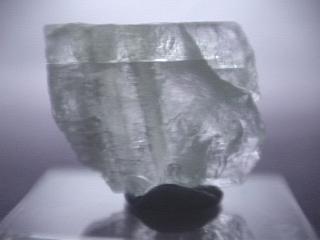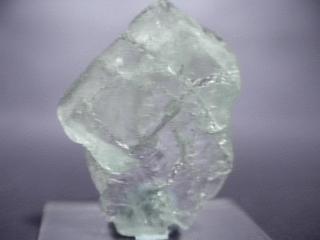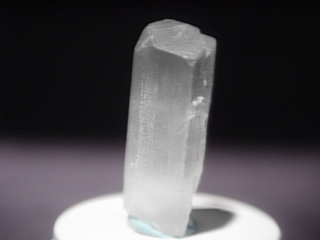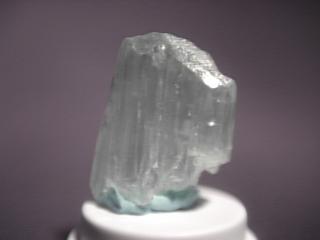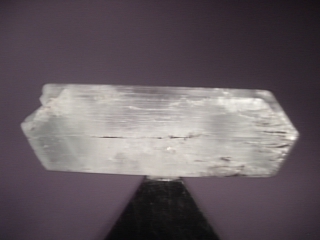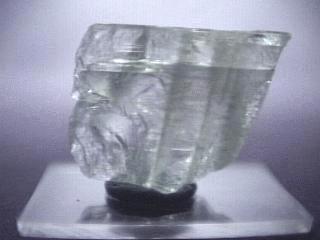
HIDDENITE
Specimen hid-1
$ 48.00
Dims: 1.4" x 1.1" x 0.6"(3.6 x 2.8 x 1.5 cm)
Wt: 20.7 g
Minas Gerais, Brazil
Now, I know that there are some of the mineral cognoscenti out there that will frown upon my putting Brazilian spodumene down as "Hiddenite". However, the particular green color of this material implies that it is not caused by iron, but rather by chromium. This particular specimen is made up of a single crystal. It appears to be double-terminated, as it has two crystal faces on opposite ends of the piece. It is much shorter for its width and thickness than most that I have seen. At first I thought there were spots of damage on the specimen, but I realized that spodumene doesn't have a conchoidal fracture, so I knew that the curved faces that I saw were natural in occurrence. Its color is a rather pale green that has no yellow tinge, as does most of the green spodumene from Brazil. Its luster is vitreous and it is transparent, but has many internal cleavage lines and fractures, and some cloudiness in spots. Though misshapen, this crystal has almost no damage.
